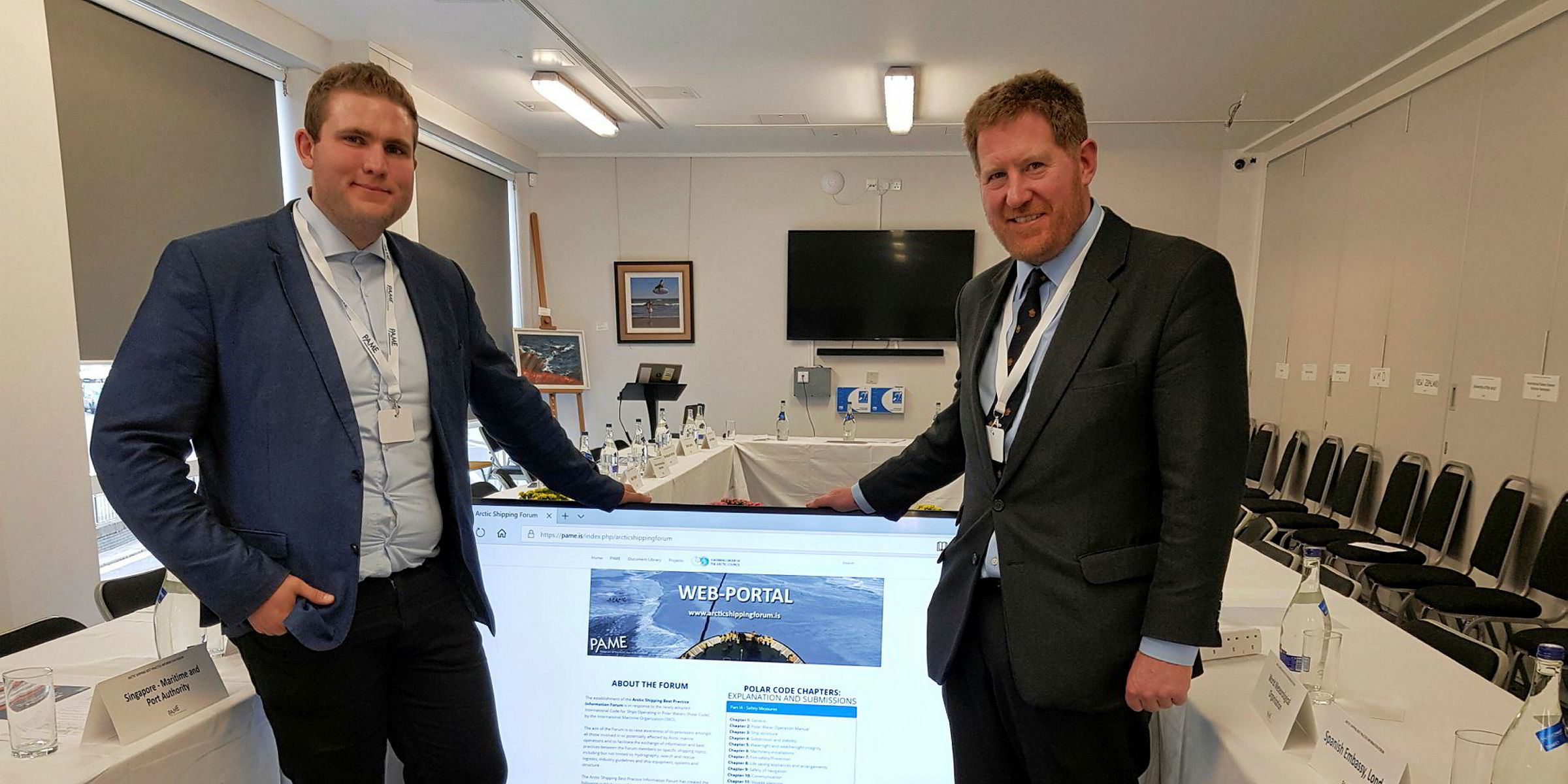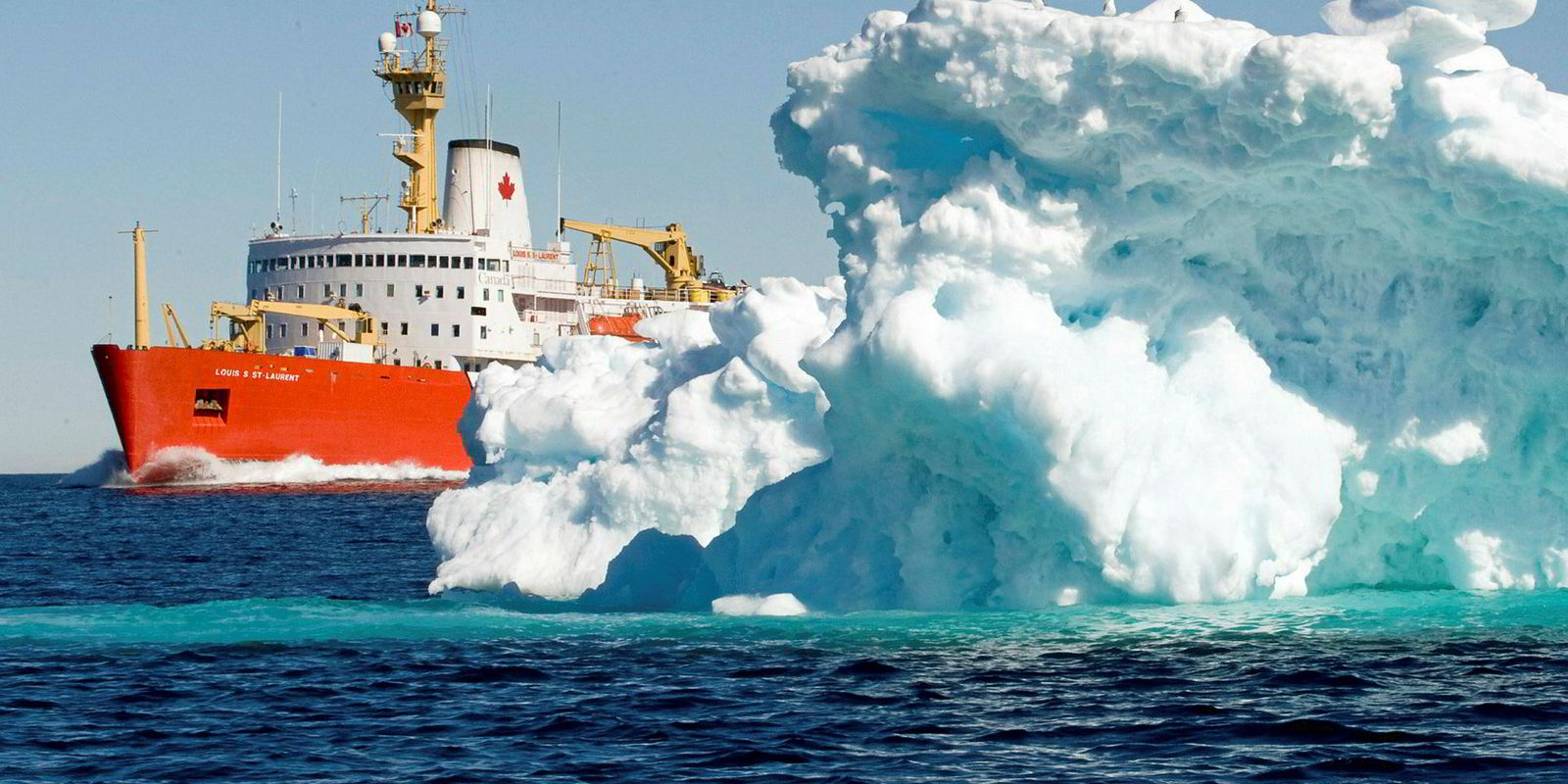An Arctic Council working group has launched an online resource to help shipowners and operators working in the polar regions.
At its meeting in London this week, the Arctic Shipping Best Practice Information Forum, which works under the Arctic Council’s Protection of the Arctic Marine Environment (PAME) working group, unveiled a web portal with links to data to help companies implement the IMO’s new Code for Ships Operating in Polar Waters (Polar Code).
The publicly available portal — ArcticShippingForum.is — follows the chapters of the Polar Code, gives access to summaries of the information from a range of bodies and provides hyperlinks to relevant web pages.
It also has a state administration page on which the eight member states of the Arctic Council publish further information that they think is relevant for navigating in their regions.
Michael Kingston, who is a special advisor to PAME, and Hjalti Hreinsson from the PAME secretariat in Iceland, say they have logged up to 150 submissions to the portal, with a mass coming in over the past weekend.

Kingston says the data-gathering reached what he terms a “critical mass of embarrassment” where organisations realised that other bodies had already supplied their information, so they put on a push to ensure their submissions were ready for the launch.
The PAME group believes it has developed a unique tool. “There is information on here that shipowners did not even know existed,” Kingston tells TradeWinds.
This week, the Arctic Regional Hydrographic Commission told the London forum it has just completed its suggested area of travel off Spitsbergen, northern Norway, which is now available through the portal.
The World Wildlife Fund has submitted information on whaling guidelines in Canada’s Hudson Strait and Lancaster Sound explaining how to avoid whale breeding grounds. An operator might innocently go through an area, not understanding that these guidelines are in place, Kingston says, but it can now retrieve this information while charting a voyage.
Question for insurers
A big question for the insurance industry has been where to get ice charts, he adds. “Now look under Russian state administration page, and there they are.”
Forum participants appear to have a positive view of the portal.
Port state control officer Vladimir Kuzmin, of the Administration of the Baltic Sea Ports, who is based in St Petersburg, Russia, says the site is already providing a breeding ground for new ideas.
He cites the variations in polar water operational manuals: some companies provide three-page documents and others 500-pagers — both unhelpful extremes. Instead, Kuzmin says the forum could provide a template to follow, with these details posted on the site.
But one forum participant comments that the real test will be in keeping the information on the portal up to date. “In this day and age there is nothing more frustrating than dead links,” he says.
Hreinsson acknowledges that gaps remain in the portal information, and more submissions are needed. The forum’s participants have pledged to update the information, but he and Kingston will be sending out reminders.
“It is a work in progress but a massive step forward,” Kingston adds.
He also suggests that the polar portal concept, which has been presented to the IMO, could be replicated in other areas where collaboration is needed between different organisations.
The concept comes in the wake of reports from Lloyd’s of London on the Costa Concordia sinking, the Deepwater Horizon disaster and a forward-looking study on the Arctic, Kingston explains.
“It was recognised that international regulators and governments need help, not just with the building of their regulations but with the implementation of them,” he adds. “It is about learning from the lessons of history to prevent disasters going forward.”





